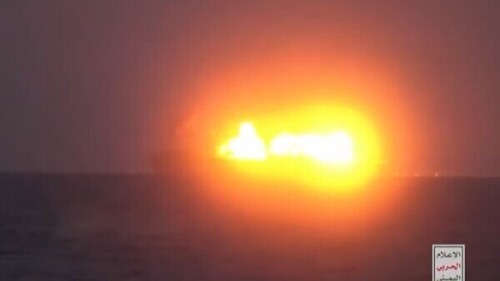The Kaaba at the Grand Mosque in Mecca, Saudi Arabia, now empty of worshippers. (Reuters) |
The coronavirus pandemic came to the Middle East in February with reports of its spread in Iran. By early March it was reported in numerous countries, but levels remained relatively low for several weeks. Now, like most of the world, the region is suffering from thousands of new cases a day. However, responses to the pandemic range from lockdowns of the sort we have seen in the United Kingdom to more laissez-faire approaches. Responses are hampered by civil wars, terror threats, insurgencies and weakened states that don’t always control their whole country.
Iran banned internal travel between localities on March 26 in an attempt to slow its outbreak, which affects more than 30,000 people. Iran has been criticized for failing to announce its cases earlier or put in place restrictions in February. The country has requested sanctions relief while turning away aid from groups such as Doctors Without Borders.
Responses to COVID-19 are hampered by wars, weak states, and regional mistrust.
Iran’s mishandling of the pandemic has spread cases to Afghanistan, Kuwait, Bahrain, Lebanon and other states, according to reports. Iran’s response to accusations that its lax policies enabled the virus to spread has been to falsely accuse the U.S. of launching a “biological war” against Iran and to spread conspiracy theories about Washington creating the virus. This has led to a narrative among Iran’s allies in the region, such as Houthi rebels in Yemen, who view the virus as a plot. This makes the pandemic harder to fight comprehensively because there is less regional cooperation against it.
The other major divide in the region is between wealthy and poor countries. The Gulf states that make up the Gulf Cooperation Council have GDP per capita rates of between $20,000 and $70,000, making them some of the wealthiest and most advanced in the world. Dubai’s airport, now largely closed because of the virus, typically is one of the busiest in the world. Other countries in the region, affected by civil war and poverty, lack resources to combat the virus. Yemen, Libya, Syria, Iraq and the Palestinian-controlled Gaza Strip rank among the poorer states.
A crowd of Egyptians seeking coronavirus testing congregates outside the central laboratories of the Ministry of Health on March 8. |
Most countries in the Middle East are following Europe’s model of closing borders and instituting curfews. The Kurdistan region of Iraq was one of the first to do so in early March, followed by lockdowns in Israel and Jordan in mid-March. The Gulf states have followed suit. In Iraq, however, the presence of crowds for politically motivated events continues, despite social distancing guidelines. When a Palestinian prisoner was released on March 24, hundreds turned out in Jenin, despite Palestinian Authority guidelines against mass gatherings. Egypt ostensibly is on lockdown but the ability of authorities to enforce the guidelines in crowded urban areas remains to be seen.
In Syria, locals say there is no way to test for the virus. Some cities are locked down by the local authorities but the area is divided and water has been cut off to 460,000 people even though they are urged to stay at home. With millions of displaced people and refugee camps, it’s unclear how Syria could manage a pandemic. Damascus says it has only a few cases of the virus, but without testing it’s unclear if areas outside of government control are affected.
The picture across the region is troubling. The Middle East Center for Reporting and Analysis documented 36,389 cases on March 25, an increase of almost 8,000 in two days. This is the same situation faced in other regions, but the Middle East is unique in its divisions brought about by conflicts and insurgencies. On a global level, the region forms a bridge between countries in sub-Saharan Africa, which similarly lack testing and measures to confront the virus, and wealthier states in Europe that also are struggling and cannot likely send aid.
The only positive emerging in the region is that some militant groups, such as Hamas and Hezbollah, reportedly are devoting resources to fighting the virus rather than attacking others. However, if the pandemic weakens states and increases poverty, it appears only a matter of time before new conflicts erupt.
Seth Frantzman, a Middle East Forum writing fellow, is the author of After ISIS: America, Iran and the Struggle for the Middle East (2019), op-ed editor of The Jerusalem Post, and founder of the Middle East Center for Reporting & Analysis.








